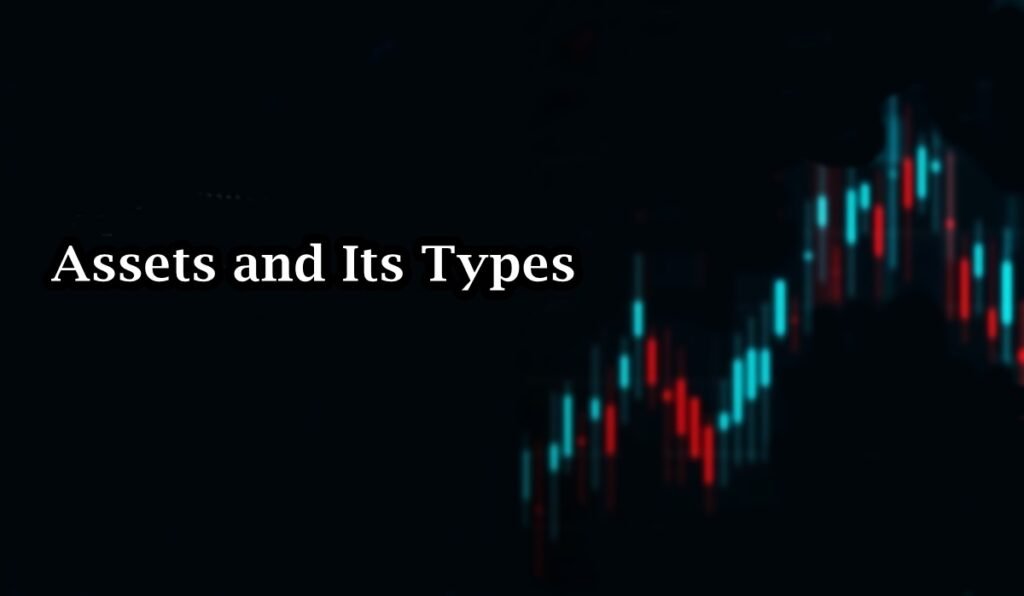
Introduction
An asset is generally defined as “something that has economic value in exchange”. In general, everything around us is considered as an Asset. Even an individual’s services, which are valuable to companies and corporations, are considered as an asset. Companies, by using services of their employees, produces something that has an economic value. Every individual holds some personal assets in everyday life like cash, credit card balance, and insurance policies. Apart from this general perception of asset, modern economies rely on value of tangible and intangible assets. The concept of tangible and intangible asset is core of business. There are many other types of assets, but tangible and intangible assets are the concern of Financial Market. The relation between tangible and intangible assets are interconnected. The intangible assets are formed in order to ensure the production of tangible asset. This writing is intended to answer the questions of tangibility and intangibility.
Tangible and Intangible Assets (Types of Assets)
These are basically two types of assets which are the concern of modern financial world. Tangible assets, as the name suggest, are those assets which can be touched and whose value is based upon its physical properties. Examples include land, machinery, and equipment for daily life use.
On the other hand, tangible assets are accessible in physical shape. These are actually the financial claims that can be used to generate cash in future. This type of asset plays an important role in development of modern economy. Both the types are used by companies for better production and maintaining financial health of company. The following are the assets included in tangible and intangible asset:
Fixed Assets (Tangible assets)
Tangible asset can be anything like land, machinery, or equipment. These assets are known as fixed assets. Current assets are also included in tangible asset. These assets are considered as short-term resources that can be converted into cash. These assets are accounts receivable, goods that are ready for sale, and investment made by companies. These assets help company maintain financial health of company. These two are the main components of company’s balance sheet. 1
Now the interesting things is that both are important for a company to maintain long-term investments and short-term operational requirement needs for a company. However, it is not easy to convert fixed asset into cash, rather used for production purposes. On the other hand, current assets provide liquidity to business, and help in company’s financial health and also contribute in its day-to-day activities. This is just the one picture of Financial World, the other complete it.
Financial Assets (Intangible assets)
Our real concern is intangible assets which constitute financial markets. Financial instruments are intangible assets. Financial instruments are also known as financial asset and securities. Interest of participant is increasing day by day. Financial instrument is basically a claim to future cash. Their value is derived from its liquidity, risk-return profile, and market value (influenced by supply and demand, economic condition, and trader and investors sentiments). Common examples of financial assets are:
- Loan by Bank or any investor
- Bond issued by corporations and governments
- A share of common stock by companies
- Forex currency pair exchanged in Foreign Exchange Market (because it is a tradable instrument)
- Cryptocurrency (modern blockchain technology having no physical shape).
As it is claimed that the uses of both are interconnected. In modern financial world, there are two types of participants: the one who has surplus of funds and wants to invest for generating more capital, and those who wants funds for the production of goods, services, equipment, and fixed asset. The simplest example is Loan by banks or investors. This party has surplus of funds. When borrower approaches the banks, a formal contract is formed which becomes the financial asset. This financial asset (a formal contract which contains specified amount, interest to be paid on the amount) is offered by borrower, and Bank or any lender become the investor.
This is just simple analogy which makes us understand how financial instruments are issued and used in real worlds. In case of Bond, the issuer agreed to pay interest after specified period of time until its maturity. Bonds are issued by governments and corporations.
Financial management is an important part of company’s management. They employ different strategies for better profit generation. The use of intangible assets enhances their employed strategies. Tangible assets are mostly used for financing and investment. Both generate profit for smooth running of company. In order to finance company, they develop formal contracts and issue financial assets. These financial assets may include bonds and shares of stock and represent claim for company’s assets or future cash flow. Companies also invest capital in different financial assets and generate surplus funds.
Concluding remarks
To sum up all this, in financial world, both tangible and intangible assets are used, and play an important role in modern day business. We cannot ignore one when it comes to business. No person invests all their investment in one business. They find alternatives when it comes to investment, diversify risk. Financial markets help in diversification of risk for them. Those who have surplus of funds finds way in financial markets for investment purposes. Business approaches them by issuing financial assets to them. This process is widely used in modern day finance. That is why is will not be incorrect to say “in order to produce intangible assets, tangible assets are formed to support financing for production.” However, our concern in this section of website is limited to Financial Markets.
Frequently Asked Questions (FAQs)
Assets are resources that have economic value and can be exchanged with cash or with other contrastive assets. Assets can be tangible and intangible.
The most popular definition of tangible asset is that it can be touched and have physical features. While, intangible lacks physical attributes and cannot be touched. However, it would be better to say that intangible assets are formed in order to finance tangible assets.
The most popular tangible assets that a company owns are real estate properties, machinery, inventory, equipment, vehicles and furniture.
Company needs financial assistance in order to create tangible assets for a company. Financial assets are intangible assets in realm of business and financial markets. There are other intangible assets like copyright, goodwill, customer relationship, software and license.
I’m Abdullah Shah, a content writer with three years of experience in crafting engaging and informative content. My background in market analysis complements my work, allowing me to create content that resonates with audiences. I’m also a seasoned practitioner in the forex and crypto markets, with a strong foundation and deep interest in finance. My passion for the financial world drives me to produce content that is both insightful and valuable for those interested in understanding market trends and financial strategies.





